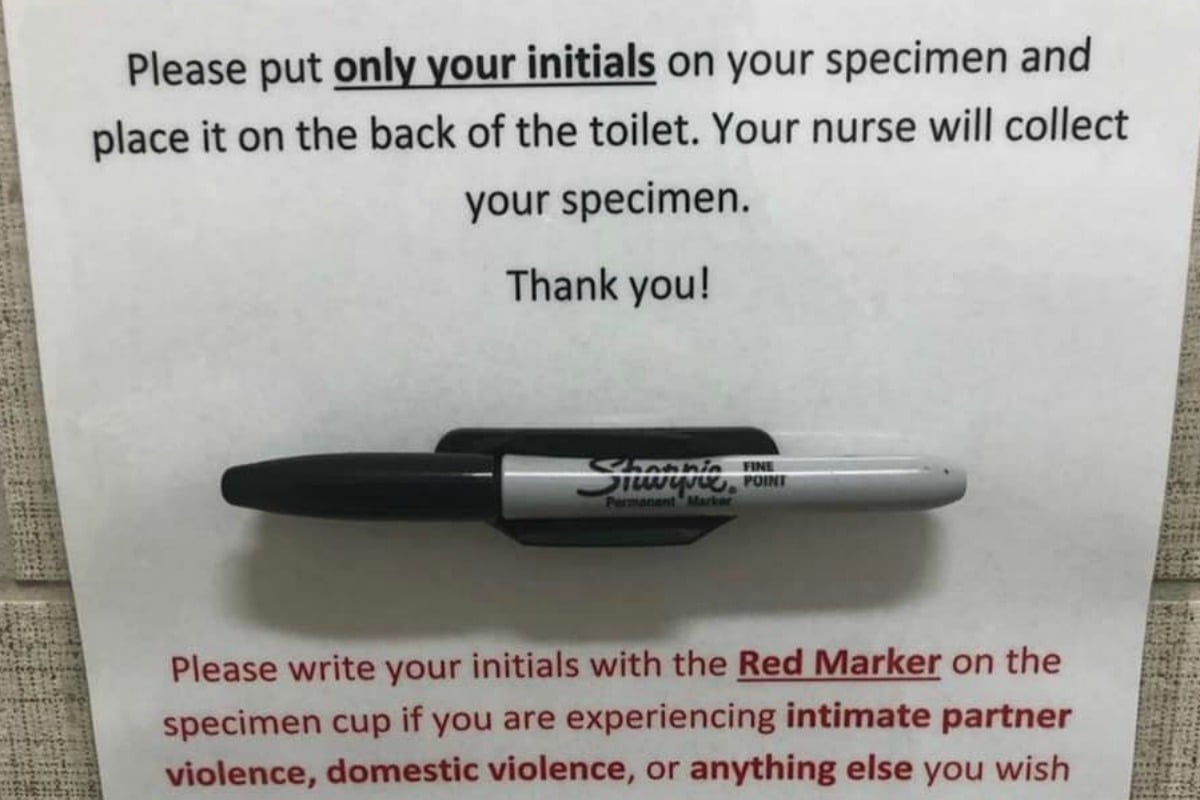
An unknown hospital clinic is giving patients an ingenious way to signal whether they are dealing with domestic or family violence.
The sign, which went viral on Twitter last week, gives the patient two ways to return a urine sample to nurses.
While typically patients would use a black marker to initial the cup, the sign offers patients the option to use a red marker instead, to indicate they are experiencing domestic violence.
“Please put only your initials on your specimen and place it on the back of the toilet. Your nurse will collect your specimen,” the black text on the sign read.
“Please write your initials with the Red Marker on the specimen cup if you are experiencing intimate partner violence, domestic violence, or anything else you wish to discuss in confidence with your provider,” the red text on the sign read.
“We will ask anyone accompanying you today to leave the room before discussing your concerns.”
This is such a simple system but could save so many lives. Grateful to have seen it circulating (anon OP) and hope more places pick this up. #BelieveWomen #DomesticViolence pic.twitter.com/6g2KR4PCv0
— Green Leaf Geek (@greenleafgeek) January 19, 2020

Top Comments
This is a really interesting idea. I'd love to know how it's working out.
I think it's a great idea as well, but it's not going to work as effectively if abusers are aware of it: I doubt that those sort of people are reading the Mamamia web site, but it sounds like it's being reported more widely too.
Given that this in in Pauline Hansen's home state, I hope that this sign is up in the men's toilets there as well...
I went to hospital once having been pushed down a huge flight of stairs. I'd broken my arm, big toe, a couple of ribs and sprained my knee.
The nurses were amazing in reading between the lines of what I was going through. I did refuse the extra services they wanted to provide because I was a mess, but they wouldn't let me leave without giving me so many contacts for places that could help even though I didn't tell them much.
Kudos again to our amazing nurses we have in Australia - It's the profession I respect the most.